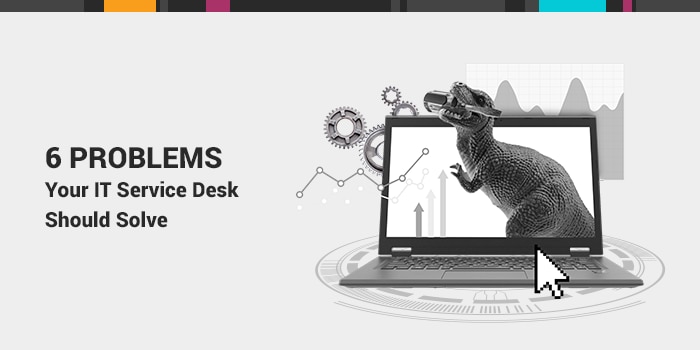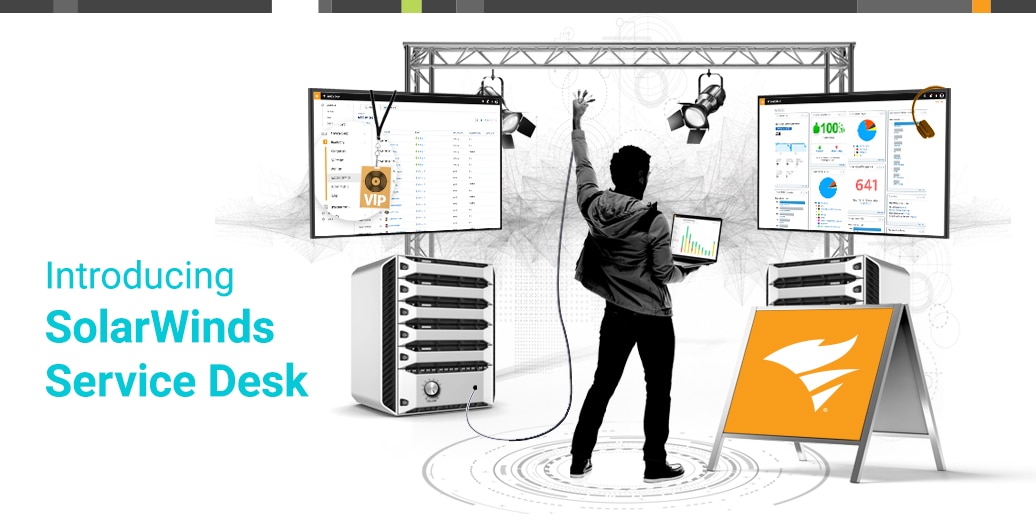Today’s IT service desks and IT organizations face countless challenges. Technology is everywhere throughout an organization, which can create difficulties in tracking and communicating for service providers. For modern organizations of any size, it takes a comprehensive IT service management (ITSM) strategy to meet the current challenges .
What are some of the most common obstacles an IT service desk should help your company tackle?
- Our IT support processes lack structure.
Most companies lack a standardized way of handling problems and issues. An employee opens a ticket. It gets assigned to someone. They fix it. But there’s no rhyme or reason to how it’s done. An IT service management solution can lend structure to an IT help desk and IT support processes, helping you define and enforce formal workflows to be followed whenever a new ticket is opened. Some of the mundane, repetitive tasks can even be streamlined and automated. Certain types of tickets can be dynamically routed to specific individuals based on skills and experience.
For example, maybe anything from a C-level executive is routed to an experienced technician.
You can also use automations to notify groups or individuals when certain keywords pop up in tickets, or escalate tickets as service deadlines approach.
- We don’t know what works, and what doesn’t.
Without a comprehensive ITSM strategy, companies seldom have insight into which procedures are effective, and which ones aren’t. An IT service desk tool can change all that, providing valuable intelligence into which activities result in the fastest resolutions, and which ones have the greatest positive impact on system performance and reliability. You can boost productivity by creating a set of best practices for when common problems and issues arise.
Sometimes the best way to understand what's working is to ask your customers. In the service desk's case, ask the employees you're serving. You can create CSAT surveys and a process for responding to any negative reviews. Use this feedback over the long term to refine processes and service delivery.
- We have a hard time measuring the efficiency of our staff.
IT service desk solutions allow companies to better assess the efficiency and effectiveness of their human resources. For example, many of the more advanced systems enable full, end-to-end tracking of the amount of time spent on each incident. This can help managers step in when issues take too long to resolve, and enable them to identify areas in need of improvement (i.e. if a staff member needs additional training on a certain topic).
A great place to start is with service level agreements (SLAs). Set a standard for how long it takes to assign, respond to, and resolve incidents. From here, you can create escalations and notifications to help your team fulfill its agreements. Evaluate success rates to determine if your processes are working.

- Our support team wastes too much time on “routine” calls.
IT resources are scarce nowadays, and businesses need to ensure they are being utilized to their fullest potential. Answering routine inquiries – for example, responding to an employee checking on the status of a software purchase request – is not the most effective use of their time. Cloud-based service desk software provides employees with a variety of “self-service” features, such the ability to track the status of open issues online, or to access a knowledge base that will allow them to troubleshoot and correct simple, common problems on their own. This frees up support staff to focus on resolving more complex or urgent issues.
In addition, we would suggest a few strategies to discourage walk-ups and help line phone calls, instead driving traffic through an employee service portal. This way, you collect the information you need up front, cut out back-and-forth communication with requesters, and create an access point for solutions articles to address repetitive issues.
- We have trouble tracking asset repair histories.
Companies with manual ITSM policies in place may be able to store data about incidents and how they were resolved, but often struggle to link those details to the actual systems involved. This leaves them with limited visibility into the histories of their assets, hindering them from making informed decisions about replacements, upgrades, etc. With an IT service desk solution that's unified with an IT asset management environment, companies can maintain complete histories of all problems and issues for each and every component of their technology infrastructure.
We referenced solutions, or knowledge base, above. To start, you can link these articles to repetitive issues with certain devices. Even better than that, though, you can build a configuration management database (CMDB) to track every item in your organization and how they relate to each other. That means you'll have a complete record for every laptop, including current and previous owners, a history of incidents, an inventory of hardware, software, and licenses... and more. Now you'll know where everything is. You'll know where you're using all those licenses you bought, and you'll know when it's time to renew a subscription.
- We have service "silos."
Many organizations provide support through multiple channels - email, web, phone. And, they often find it difficult to manage these various venues in a consolidated fashion, and unify the information generated by related service activities. An IT service desk provides an effective way to cohesively organize issues across multiple channels, making it easier to control, measure, and document associated support procedures.
The other type of "silos" we often see are departmental silos. When a service request touches more than one department, communication can break down. If different departments use different project management or communication platforms, it can be difficult to make the technology talk. Your service desk can solve these issues by creating a service catalog item, complete with workflows and automatic notifications for different departments to complete different tasks. That means you can ditch those long email chains for employee onboarding -- you know, the ones where the process breaks down if you forget to copy one person. Build out the process and the assignments so you know all of the necessary communication will occur.
This post was originally published on 4/13/17 and has been updated to reflect the most current ITSM technology and best practices. 








